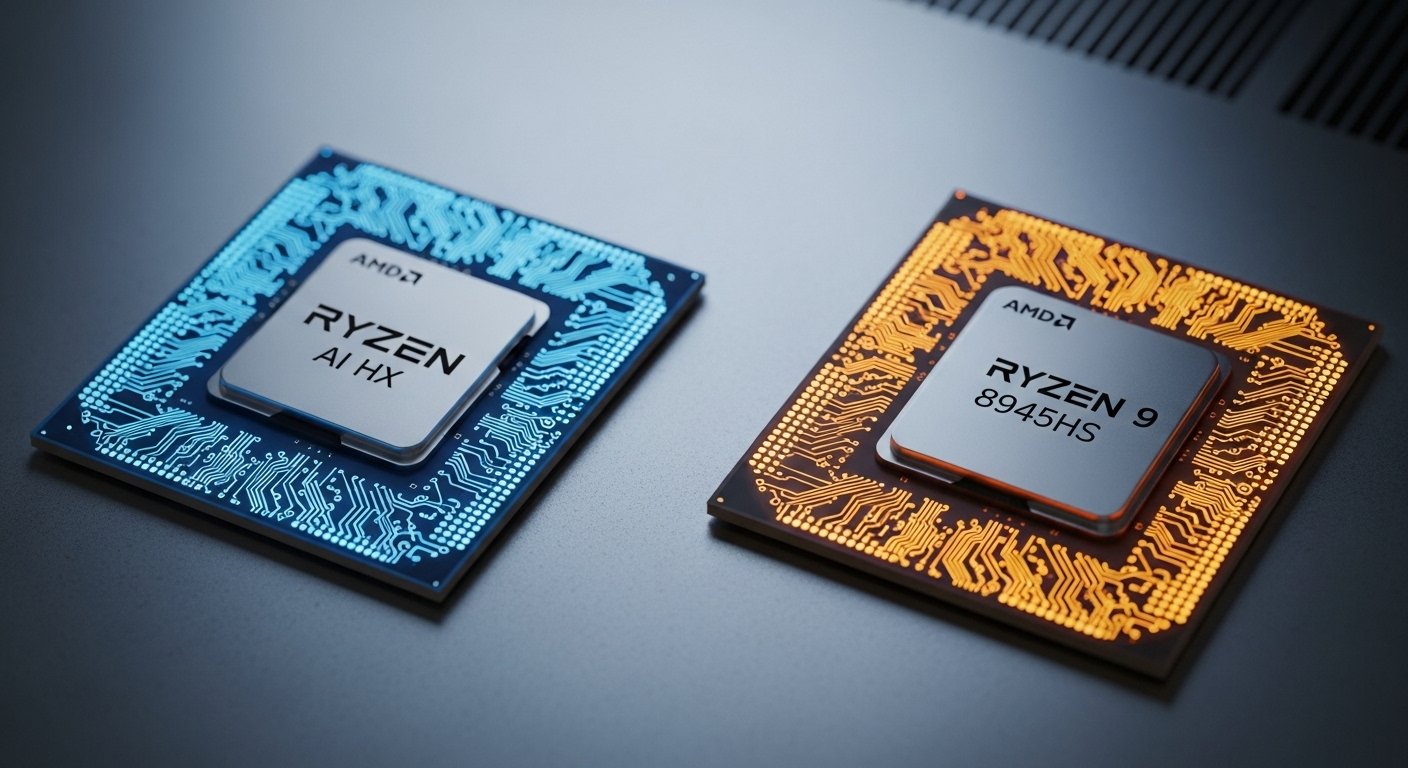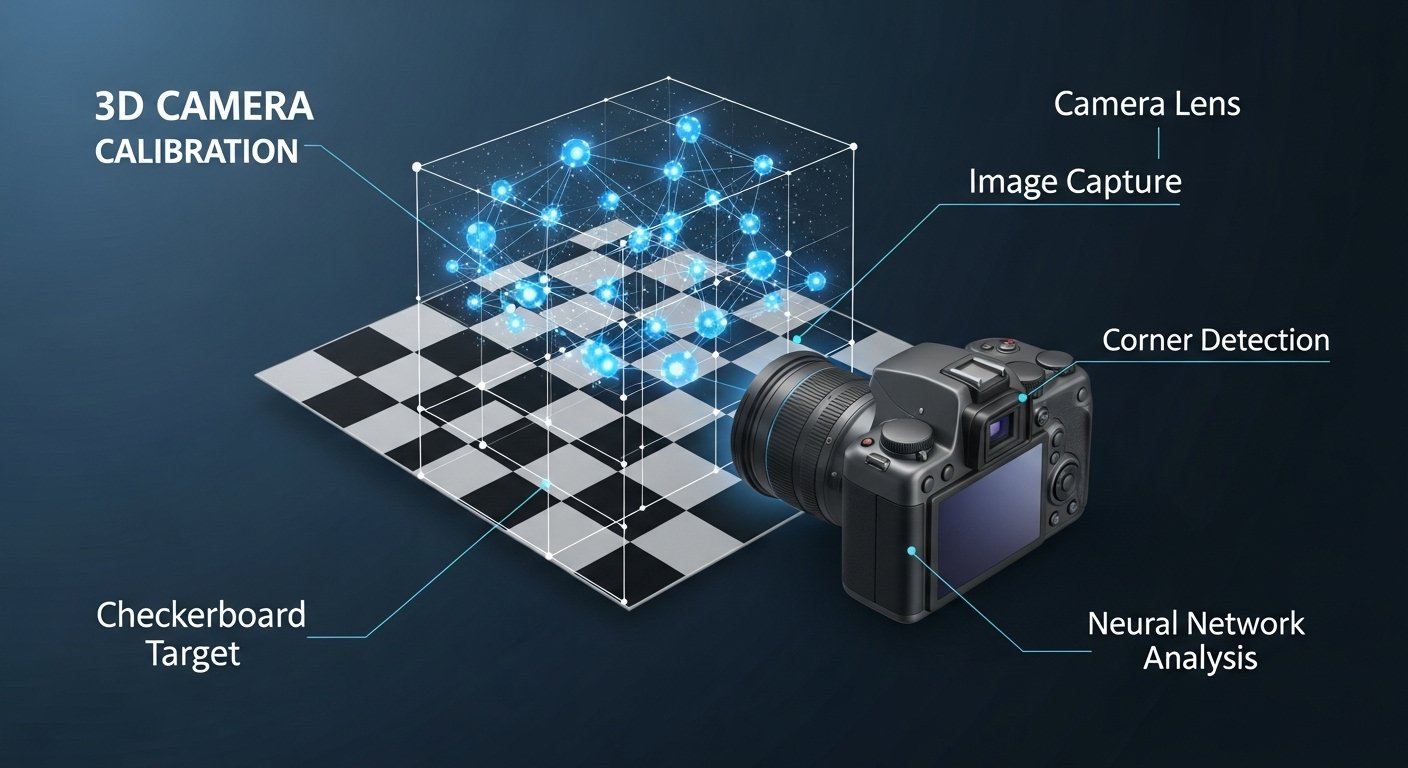When choosing a high-end laptop or compact workstation today, the processor matters more than ever. With AI workloads becoming part of everyday computing (think image upscaling, content generation, predictive features), “regular” CPUs are no longer the only consideration. That’s why comparing AMD Ryzen AI 9 HX vs AMD Ryzen 9 8945HS is crucial: one is a newer AI-aware design, while the other is a tried and tested high performance APU. In this article, we’ll break down their architectures, benchmarks, strengths, and weaknesses, so you can pick smart.
In the next sections, you’ll see clear, real numbers, understandable explanations, and direct recommendations based on actual use case. Let’s dive in.
Overview: AMD Ryzen AI 9 HX and Ryzen 9 8945HS
Before comparing in depth, here’s a quick side-by-side snapshot:
| Chip | Architecture / Series | Cores & Threads | Base / Boost | TDP Range | Integrated Graphics | AI / NPU Notes |
|---|---|---|---|---|---|---|
| Ryzen AI 9 HX (e.g. HX 370 / HX 375) | “Strix Point” / Ryzen AI 300 | 12 cores (4 “big” + 8 “compact”) / 24 threads | 2.0 GHz base / up to ~5.1 GHz boost | 15 W to 54 W configurable | Radeon 890M (16 compute units) | Up to ~50 TOPS NPU performance claimed |
| Ryzen 9 8945HS | “Hawk Point” / Ryzen 8000 HS | 8 cores / 16 threads | 4.0 GHz base / up to 5.2 GHz boost | 35 W to 54 W typical (configurable) | Radeon 780M | AI enhancements over prior HS chips — AMD claims up to 40% generative AI boost versus older models |
From the outset, the Ryzen AI 9 HX has more cores (albeit mixed big + compact), a newer architecture aimed at AI, and a higher claimed NPU capacity. Meanwhile, the 8945HS is a strong, mature chip with fewer cores but solid clock speeds and efficiency.
Let’s examine how that plays out in real benchmarks and real life.
Architecture and Design Philosophy
Hybrid Core Design vs Homogeneous Cores
One of the biggest shifts in modern CPUs is hybrid design (big + small cores). The Ryzen AI 9 HX implements a hybrid layout: 4 full “big” Zen 5 cores + 8 compact Zen 5c cores. That helps balance heavy tasks and background workloads.
In contrast, the Ryzen 9 8945HS uses a classic homogeneous 8-core Zen 4 design — all cores are the same.
The hybrid model can offer better parallelism and efficiency, especially when carefully scheduled workloads use compact cores for background threads while big cores handle heavy jobs. But that benefit depends heavily on software support and firmware tuning.
Process Node and Efficiency
Both chips are built on advanced (4 nm or similar) processes, which helps performance per watt. The HX 370 is built with modern process tech and has a configurable TDP range (15–54 W) to adapt to different laptop cooling designs.
The 8945HS similarly fits in a 35–54 W window (or 35–54 W in many real devices) and benefits from mature power management on the HS line.
In practice, the HX has more headroom in bursts and AI tasks, at the cost of more thermal and power demand.
NPU / AI Capabilities
This is one place where Ryzen AI 9 HX pulls ahead. AMD claims up to 50 TOPS (trillion operations per second) of AI throughput for HX series.
The 8945HS also has AI enhancements relative to older HS chips; AMD claims up to 40% generative AI performance uplift vs prior HS models.
However, 8945HS’s NPU is more limited, and in heavy AI inference or local model tasks, the HX is likely to demonstrate tangible advantage.
Benchmark Numbers: What Real Tests Reveal
Numbers are vital to see how theory plays out. I’ll highlight results from published benchmarks and community tests.
Ryzen 9 8945HS Performance
-
In a leaked benchmark report, 8945HS recorded ~2,608 in single-core and ~12,683 in multi-core tests (on 16 GB DDR5) under WCCFTech’s testing.
-
NotebookCheck’s spec listing confirms 8 cores operating between 4.0 GHz and 5.2 GHz.
-
From user postings on Reddit (for an Asus G14 with 8945HS):
• Geekbench 6: Single-Core ~2,487, Multi-Core ~12,791
• Cinebench R24: Single-Core ~101, Multi-Core ~900 (power draw ~53 W sustained) -
In mini-PC reviews (Geekom, etc.), the chip hit thermals around 90 °C under load, still within spec.
These are strong numbers for a non-HX chip — showing that 8945HS is no slouch.
Ryzen AI 9 HX (HX 370 / HX 375 etc.) Performance
-
AnandTech notes that HX 370 is a 12C/24T design (4 big + 8 compact), with boost up to 5.1 GHz and a variable TDP of 15–54 W.
-
LaptopMedia data confirms similar core counts, clocks (2.00–5.10 GHz), TDP range, and NPU ~50 TOPS.
-
Battlecards from AMD claim that HX 370 delivers up to 44% faster Cinebench R24 performance vs Apple M3, and lead in 3D rendering and word processing.
-
Some product listings for mini PCs using HX 370 cite 80 TOPS AI performance claims (probably combined metrics) in certain configurations.
We lack large independent laptop benchmark suites yet (since HX is newer), but AMD’s and partner data suggest strong gains, especially in AI and parallel workloads.
Head-to-Head / Comparative Observations
-
For pure multi-threaded CPU workloads, HX often will pull ahead due to its extra cores (12 vs 8).
-
For single-core bursts, the difference may be narrower; HX’s big cores boost in competitive ranges.
-
In AI / NPU tasks, HX has a strong edge in peak throughput.
-
Efficiency and sustained performance will depend heavily on thermal budget, laptop design (cooling), and power management.
One Reddit comment in comparing HX 370 to an Intel chip observed: “single threaded score is 15% lower and the multi core is > 35%” in one scenario, suggesting real-world scaling depends on how TDPs are managed.
In short: HX likely wins in heavier/parallel and AI workloads; 8945HS still holds well in many CPU tasks and will often be more thermally efficient in lighter devices.
Real-World Use: Which One Excels Where
Let’s go use-case by use-case and see how amd ryzen ai 9 hx vs amd ryzen 9 8945hs stack up.
Productivity, Office, Developer Workflows
-
For coding, compiling, running multiple dev tools, virtualization — HX’s extra cores and hybrid flexibility pay off.
-
For general office apps (Word, Excel, browser, spreadsheets), both will handle the load with ease. The difference will be small.
-
In scenarios with background AI tasks (e.g. code assistants, local inference of small models), HX’s NPU can reduce CPU burden.
Creative Tasks: Photo / Video / 3D
-
Rendering (Blender, Cinema 4D): HX’s additional parallelism should deliver better throughput for large scenes.
-
Video editing / encoding: HX likely finishes long encodes faster (especially when tasks scale across threads).
-
AI-assisted effects, such as generative fills or smart upscaling, lean strongly in favor of HX given its stronger NPU.
Gaming & Integrated Graphics
-
Radeon 890M in HX vs Radeon 780M in 8945HS gives HX a head start in integrated GPU tasks.
-
But in most gaming laptops, a discrete GPU is used, so the CPU’s role is often in feeding data to GPU. HX has more overhead capacity for feeding frames in CPU-bound games.
-
In GPU-light or iGPU-only tasks (e.g. light eSports titles or integrated graphics usage), HX will likely outpace 8945HS by a noticeable margin.
AI / Machine Learning / Inference
-
If you plan to run local models (Stable Diffusion, LLM inference, AI upscaling) on the laptop itself, HX’s NPU gives a major boost.
-
8945HS is improved over older HS chips, but for heavier AI workloads, HX is better positioned to scale.
-
Also, HX’s hybrid design means non-AI CPU tasks can run concurrently with the NPU without saturating all cores as much.
Power Use, Battery Life, Heat
-
Lightweight use (browsing, light apps): 8945HS might have an edge in efficiency, especially when fewer cores are active.
-
Under heavy sustained load: HX may draw more power and generate more heat; performance depends on cooling design.
-
In ultraportable/thin laptops, 8945HS might maintain sustained performance more reliably due to lower thermal stress.
Strengths & Weaknesses Summary
Here’s a distilled pros/cons list for amd ryzen ai 9 hx vs amd ryzen 9 8945hs to help you weigh:
Ryzen AI 9 HX (e.g. HX 370)
Pros
-
More cores/threads (12 vs 8) → better multi-tasking and parallel workloads
-
Stronger AI / NPU capabilities (claimed ~50 TOPS)
-
More modern hybrid architecture
-
Better integrated GPU (Radeon 890M)
-
More headroom for boosting under adequate cooling
Cons
-
Higher power draw under load
-
More heat, demands better cooling
-
In lightweight usage, gains may be marginal
-
Dependent on firmware, laptop design for peak performance
Ryzen 9 8945HS
Pros
-
Mature, well-understood architecture
-
Very good performance for its class
-
Likely better thermals in thinner laptops
-
Lower power draw in many scenarios
-
Efficient for mixed workloads without heavy AI demands
Cons
-
Fewer cores limits heavy parallel tasks
-
Weaker NPU / AI capability
-
Integrated GPU lags behind HX’s 890M
-
Less headroom for burst-heavy workloads
Example Scenarios: Which Chip to Choose
Here are some realistic scenarios and which chip makes more sense.
| Scenario | Better Choice | Reason |
|---|---|---|
| A laptop for software dev, Docker containers, compiling | HX | Extra cores help parallel builds |
| Ultralight laptop for travel, productivity, minimal AI need | 8945HS | Better efficiency, lower thermal stress |
| A content creator doing video, rendering, effects | HX | More cores + AI acceleration help throughput |
| A gaming laptop with discrete GPU | HX, but 8945HS is still viable | HX has more CPU headroom; 8945HS sufficient for most cases |
| Running local AI models, ML inference | HX | Stronger NPU + better CPU support |
| Battery-sensitive tasks, casual use | 8945HS | Likely better sustained battery efficiency |
Conclusion
In the showdown of AMD Ryzen AI 9 HX vs AMD Ryzen 9 8945HS, the winner depends on your use case — but HX often holds the advantage. The HX chips bring more cores, a hybrid architecture, stronger NPU/AI capacity, and a more future-oriented design. For heavy workloads, content creation, AI tasks, or high-end gaming, HX will deliver stronger performance (assuming the laptop has adequate cooling and power delivery).
However, Ryzen 9 8945HS is no slouch: it remains excellent for many users, especially in lighter laptops or workflows without heavy AI demands. Its efficiency, maturity, and reliable performance make it a strong choice when portability and thermals matter more.
If you’re selecting a laptop now and both chips are in your price range, prefer HX unless battery/weight constraints are top priorities. But 8945HS remains a safe and effective option.
Final takeaway: For maximum performance, future-proofing, and AI tasks, go HX. For balance, efficiency, and everyday use, 8945HS still holds much value.
FAQs
Q1: Is the HX worth the extra cost over 8945HS?
If your workload includes heavier threading, rendering, or AI inference, the HX’s extra cores and NPU boost can justify the cost. For lighter workloads, the difference may not feel big, so evaluate your use case.
Q2: Will both chips perform similarly in thin/ultrabook designs?
In thin designs, the HX’s advantage may be limited by thermal constraints, so the difference could shrink. Sometimes 8945HS may even maintain sustainable performance better in tight thermal envelopes.
Q3: Can I run local AI models (e.g., Stable Diffusion) on 8945HS?
Yes — you can run smaller models or lighter inference on 8945HS. But for more intensive AI workloads, HX will handle them more smoothly thanks to its stronger NPU.
Q4: Are there real benchmarks comparing HX vs 8945HS side by side?
At time of writing, comprehensive side-by-side laptop reviews are still emerging, but the individual benchmark and architecture data strongly favor HX in multicore and AI tasks.
Q5: What about cooling, thermals, and longevity?
Cooling is crucial. A well-cooled HX laptop will outperform poorly cooled 8945HS, but a poor HX design might throttle. Always check laptop thermal design, fan noise, and sustained performance in reviews.








Leave a Reply